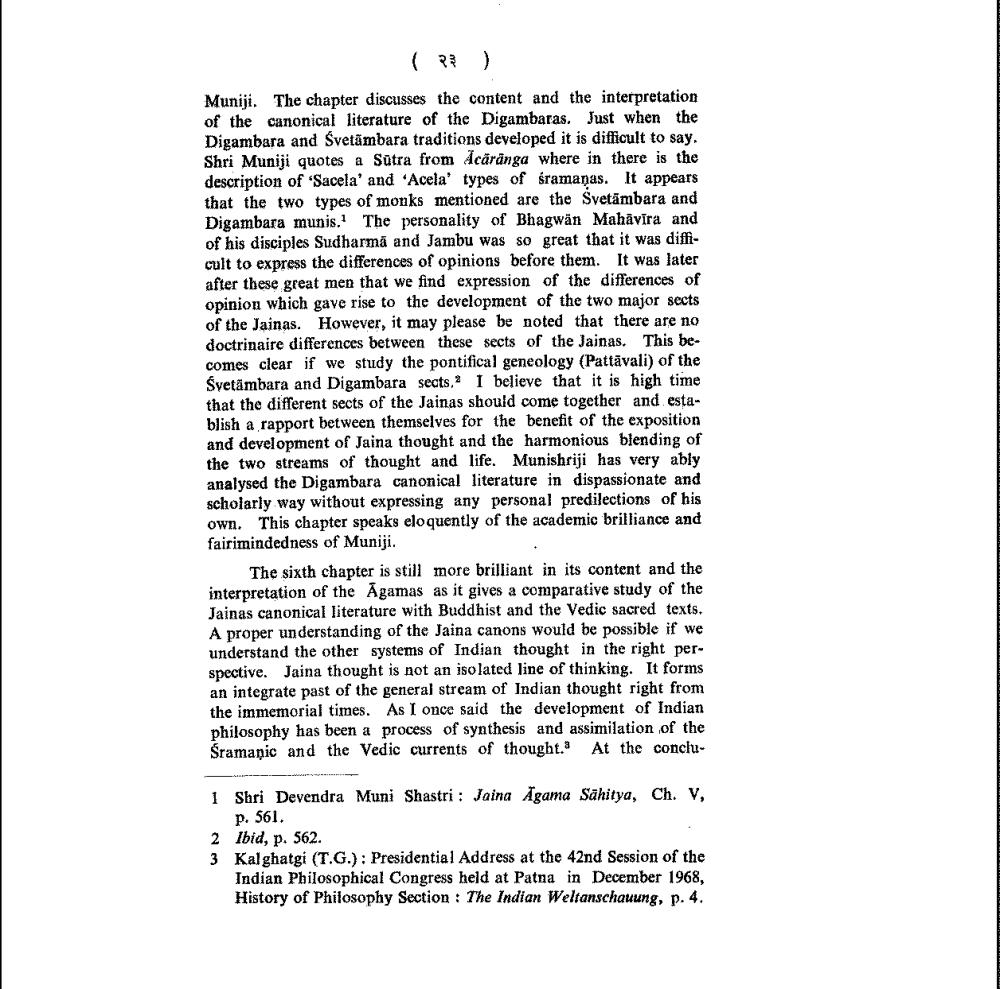________________
( २३ )
Muniji. The chapter discusses the content and the interpretation of the canonical literature of the Digambaras. Just when the Digambara and Svetämbara traditions developed it is difficult to say. Shri Muniji quotes a Sutra from Acaränga where in there is the description of 'Sacela' and 'Acela' types of śramaņas. It appears that the two types of monks mentioned are the Svetämbara and Digambara munis. The personality of Bhagwan Mahavira and of his disciples Sudharma and Jambu was so great that it was difficult to express the differences of opinions before them. It was later after these great men that we find expression of the differences of opinion which gave rise to the development of the two major sects of the Jainas. However, it may please be noted that there are no doctrinaire differences between these sects of the Jainas. This becomes clear if we study the pontifical geneology (Pattavali) of the Svetämbara and Digambara seats. I believe that it is high time that the different sects of the Jainas should come together and establish a rapport between themselves for the benefit of the exposition and development of Jaina thought and the harmonious blending of the two streams of thought and life. Munishriji has very ably analysed the Digambara canonical literature in dispassionate and scholarly way without expressing any personal predilections of his own. This chapter speaks eloquently of the academic brilliance and fairimindedness of Muniji.
The sixth chapter is still more brilliant in its content and the interpretation of the Agamas as it gives a comparative study of the Jainas canonical literature with Buddhist and the Vedic sacred texts. A proper understanding of the Jaina canons would be possible if we understand the other systems of Indian thought in the right perspective. Jaina thought is not an isolated line of thinking. It forms an integrate past of the general stream of Indian thought right from the immemorial times. As I once said the development of Indian philosophy has been a process of synthesis and assimilation of the Śramanic and the Vedic currents of thought. At the conclu
1 Shri Devendra Muni Shastri: Jaina Agama Sahitya, Ch. V,
p. 561.
2 Ibid, p. 562.
3 Kalghatgi (T.G.): Presidential Address at the 42nd Session of the Indian Philosophical Congress held at Patna in December 1968, History of Philosophy Section: The Indian Weltanschauung, p. 4.




